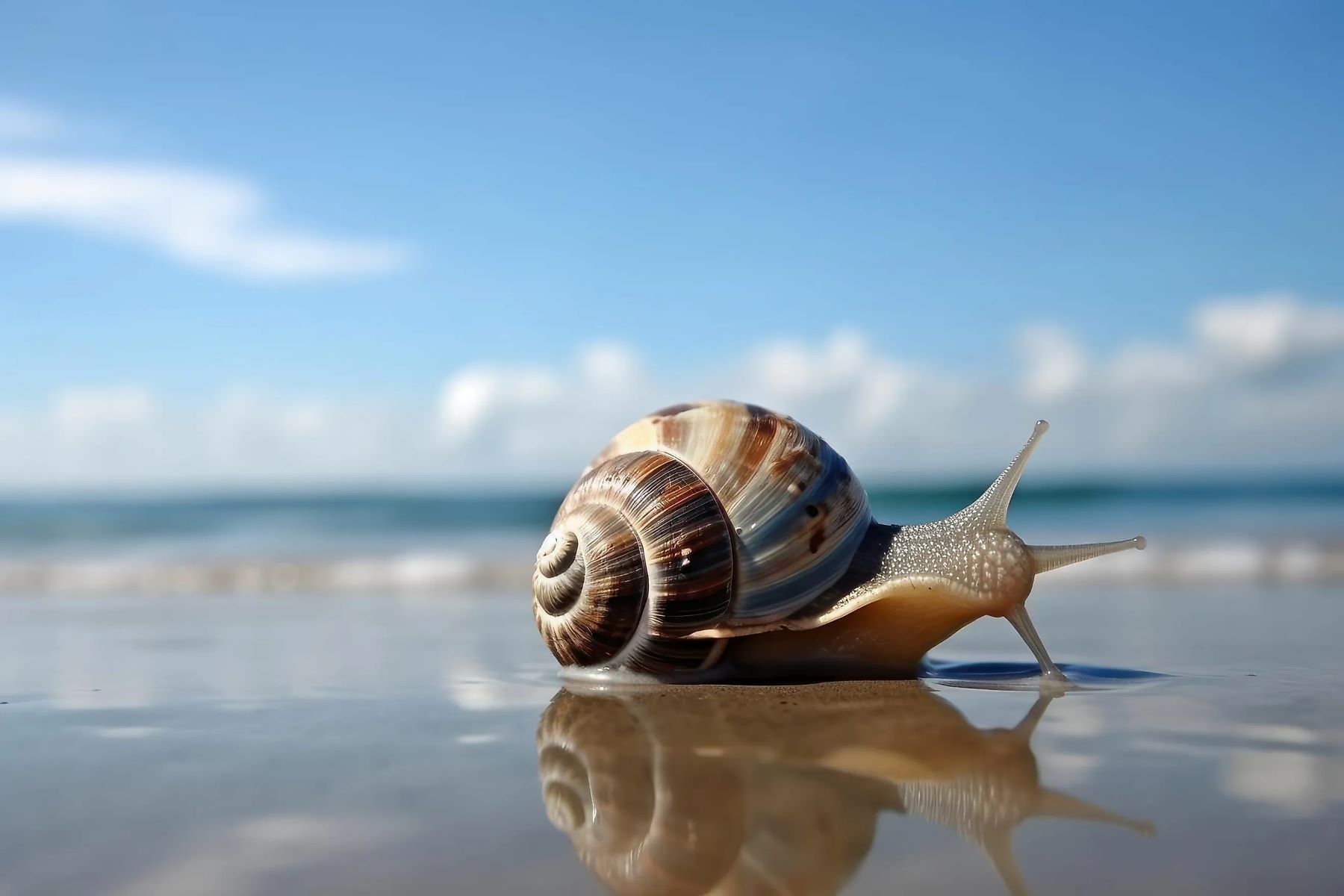When we think of barnacles, the image of small crustaceans clinging to rocks or the hulls of ships often comes to mind. However, have you ever wondered if barnacles can attach themselves to humans? While it might sound unusual, this question has intrigued scientists and marine enthusiasts alike. Understanding the biology and behavior of barnacles can provide valuable insights into their ability to interact with human skin and bodies.
Barnacles are marine organisms that belong to the Crustacea group, which also includes crabs, shrimp, and lobsters. These creatures are known for their unique life cycle and ability to adhere to various surfaces. Their adaptability and resilience make them fascinating subjects for scientific study. In this article, we will delve into the possibility of barnacles attaching to humans and explore the implications of such interactions.
As we navigate through this topic, we will examine the anatomy of barnacles, their attachment mechanisms, and the potential risks and benefits of their interaction with humans. By the end of this article, you will have a comprehensive understanding of whether barnacles can attach to humans and what that means for both marine life and human health.
Read also:Jon Snow Death A Comprehensive Analysis And Exploration Of The Characters Journey
Table of Contents
- The Biology of Barnacles
- The Attachment Process of Barnacles
- Can Barnacles Attach to Humans?
- Health Implications of Barnacle Attachment
- A Historical Perspective on Barnacles and Humans
- Preventing Barnacle Attachment
- Environmental Impact of Barnacles
- Common Myths About Barnacles
- Scientific Research on Barnacle Behavior
- Conclusion
The Biology of Barnacles
Barnacles are fascinating marine organisms that belong to the class Cirripedia. Their life cycle begins as free-swimming larvae, which eventually settle on a suitable surface and undergo metamorphosis into adult barnacles. During this process, they develop a hard calcareous shell that protects them from predators and environmental challenges.
Life Cycle of Barnacles
The life cycle of barnacles is complex and involves several stages:
- Eggs: Barnacles reproduce sexually, and the fertilized eggs are released into the water.
- Nauplius Larvae: The eggs hatch into nauplius larvae, which feed on plankton and drift with ocean currents.
- Cypris Larvae: After several molts, the nauplius larvae transform into cypris larvae, which search for a suitable substrate to settle on.
- Adult Barnacles: Once settled, the cypris larvae undergo metamorphosis and develop into adult barnacles, which remain sessile for the rest of their lives.
The Attachment Process of Barnacles
Barnacles have a remarkable ability to attach themselves to various surfaces, including rocks, ships, and even other marine organisms. This attachment process involves the secretion of a specialized adhesive substance that allows them to bond firmly to their chosen substrate.
Key Steps in the Attachment Process
Here are the key steps involved in barnacle attachment:
- Surface Selection: Barnacles use chemical and tactile cues to identify suitable surfaces for attachment.
- Adhesive Secretion: Once a surface is selected, barnacles secrete a protein-based adhesive that forms a strong bond with the substrate.
- Shell Formation: After attachment, barnacles begin to develop their protective shell, which provides additional stability and protection.
Can Barnacles Attach to Humans?
While barnacles are primarily known for attaching to inanimate objects and marine organisms, there have been rare instances where they have been found on human skin. This phenomenon is usually observed in individuals who spend extended periods in the water, such as divers or fishermen.
Factors Influencing Barnacle Attachment to Humans
Several factors can influence the likelihood of barnacles attaching to humans:
Read also:Game Of Thrones Chaplin A Comprehensive Guide To The Iconic Series
- Exposure Time: Prolonged exposure to barnacle-infested waters increases the risk of attachment.
- Skin Condition: Damaged or compromised skin may provide a more favorable surface for barnacle attachment.
- Water Temperature: Warmer water temperatures can accelerate the growth and attachment of barnacles.
Health Implications of Barnacle Attachment
Barnacle attachment to humans can have both physical and psychological effects. While the attachment itself is not inherently harmful, it can cause discomfort and irritation. In some cases, the removal of barnacles may lead to minor injuries or infections if not handled properly.
Potential Risks of Barnacle Attachment
Here are some potential risks associated with barnacle attachment:
- Skin Irritation: The adhesive secreted by barnacles can cause redness and irritation on the skin.
- Infection: Improper removal of barnacles can lead to bacterial or fungal infections.
- Psychological Impact: The presence of barnacles on the skin may cause anxiety or distress in some individuals.
A Historical Perspective on Barnacles and Humans
Throughout history, barnacles have played a significant role in human culture and mythology. In some ancient civilizations, barnacles were believed to possess mystical properties and were used in traditional medicine. Today, scientists continue to study barnacles to better understand their ecological and economic impact.
Historical Uses of Barnacles
Here are some historical uses of barnacles:
- Medicinal Purposes: In some cultures, barnacles were used to treat various ailments, including skin conditions and infections.
- Symbolism: Barnacles have been used as symbols of resilience and adaptability in various cultural narratives.
Preventing Barnacle Attachment
Preventing barnacle attachment is crucial for individuals who spend significant time in the water. Simple measures, such as wearing protective clothing and avoiding prolonged exposure to barnacle-infested areas, can significantly reduce the risk of attachment.
Effective Prevention Strategies
Here are some effective strategies for preventing barnacle attachment:
- Wear Protective Gear: Use wetsuits or other protective clothing when swimming in barnacle-infested waters.
- Regular Inspection: Regularly inspect your skin for signs of barnacle attachment, especially after prolonged water exposure.
- Use Anti-Fouling Products: If you own a boat or other watercraft, consider using anti-fouling products to prevent barnacle growth.
Environmental Impact of Barnacles
Barnacles play a vital role in marine ecosystems, providing food and habitat for a variety of marine organisms. However, their attachment to ships and other man-made structures can have significant economic and environmental consequences.
Impact on Marine Ecosystems
Here are some ways barnacles impact marine ecosystems:
- Biodiversity Support: Barnacles contribute to marine biodiversity by providing habitat for other organisms.
- Water Quality Improvement: Some species of barnacles help improve water quality by filtering plankton and other particles.
Common Myths About Barnacles
There are several myths and misconceptions surrounding barnacles and their interactions with humans. Separating fact from fiction is essential for understanding these fascinating creatures.
Debunking Barnacle Myths
Here are some common myths about barnacles:
- Myth: Barnacles are Parasites: Barnacles are not parasites; they do not derive nutrients from their host.
- Myth: Barnacles are Harmful to Humans: While barnacle attachment can cause discomfort, it is generally not harmful to humans.
Scientific Research on Barnacle Behavior
Ongoing scientific research continues to uncover new insights into barnacle behavior and their interactions with the environment. Advances in technology have enabled researchers to study barnacles at a molecular level, shedding light on their attachment mechanisms and ecological significance.
Recent Research Findings
Here are some recent findings from barnacle research:
- Adhesive Properties: Scientists have discovered that barnacle adhesive has unique properties that could inspire the development of new medical adhesives.
- Climate Change Impact: Research suggests that climate change may alter barnacle distribution and abundance, with potential consequences for marine ecosystems.
Conclusion
In conclusion, while barnacles can theoretically attach to humans, such occurrences are rare and generally not harmful. Understanding the biology, attachment process, and ecological significance of barnacles is crucial for appreciating their role in marine ecosystems. By taking appropriate precautions, individuals can minimize the risk of barnacle attachment and enjoy the wonders of the underwater world without concern.
We invite you to share your thoughts and experiences in the comments section below. Additionally, feel free to explore other articles on our site to learn more about marine life and its fascinating interactions with humans.
References:



